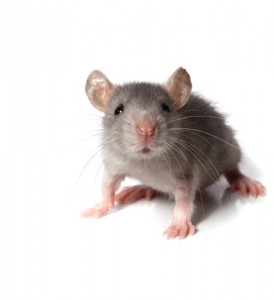Hantavirus and LCMV: Two Major Reasons Why You Should Not Share Your Home With Mice.
By Chris Williams on February 17, 2013.
 I’m always amazed when people tell me they don’t mind having a few mice around. Really? Of late, it certainly seems as if there is no such thing as a few’ mice. Recently, it appears as though everyone is being inundated with mice. Some of my regular clients (going back several years) who’ve never had mouse problems now have them. Similarly, those clients who’ve had moderate cooler weather infestations in the past are now experiencing heavier populations around their properties, and I have yet to find any definitive explanations as to why this is occurring. Plus, they’ve morphed from being just an unpleasant guest raiding the pantry to one that is regularly causing major property damage like disabling electrical systems in cars, and central air conditioning units. Recently, I’ve met clients who TWICE have had mice chew through the plastic piping of their homes domestic water supply! If those examples weren’t enough reasons why its’ okay not to share your dwelling with mice, two dangerous mouse-borne illness should do the trick.
I’m always amazed when people tell me they don’t mind having a few mice around. Really? Of late, it certainly seems as if there is no such thing as a few’ mice. Recently, it appears as though everyone is being inundated with mice. Some of my regular clients (going back several years) who’ve never had mouse problems now have them. Similarly, those clients who’ve had moderate cooler weather infestations in the past are now experiencing heavier populations around their properties, and I have yet to find any definitive explanations as to why this is occurring. Plus, they’ve morphed from being just an unpleasant guest raiding the pantry to one that is regularly causing major property damage like disabling electrical systems in cars, and central air conditioning units. Recently, I’ve met clients who TWICE have had mice chew through the plastic piping of their homes domestic water supply! If those examples weren’t enough reasons why its’ okay not to share your dwelling with mice, two dangerous mouse-borne illness should do the trick.
One of these is Hantavirus which I first heard about way back in the mid 90’s. Initial reports of an unknown and deadly pneumonia-like syndrome occurring in the ‘Four Corners’ region of the South Western United States were eventually linked to hantavirus in local rodent populations. A newly identified strain of hantavirus called Sin Nombre is responsible for causing hantavirus pulmonary syndrome (HPS). Hantaviruses had previously been known to cause human illnesses of varying severity in Europe and Asia (Grenon, Goldoff1997) but nothing like HPS where the average mortality rate for those affected is about 40 percent. My initial thoughts about this were western strains of hantavirus in western rodent populations; so it’s not a problem, but in reality, the principle rodent reservoir for hantaviruses are the deer mice (Peromyscus maniculatus) and their geographic range extends to New England. In fact there have been confirmed cases of HPS in New England (http://www.cdc.gov/mmwr/preview/mmwrhtml/mm5028a3.htm) linked to deer mice. It has also now been determined that several strains of hantavirus are capable of causing HPS and have been found in some populations of the white-footed mouse (Peromyscus leucopus) as well. (http://www.cdc.gov/hantavirus/rodents/). Hantavirus infections are not common, but certainly something to be aware about.
The other mouse borne disease getting some attention is lymphocytic choriomeningitis or LCMV, which is carried by the common house mouse (Mus musculus) and can also be carried by ‘pocket pets’ like hamsters, mice, guinea pigs etc. Persons exposed to LCMV may or may not develop illness, and symptoms are flu-like in nature. Women who become infected with LCMV during pregnancy may have complications such as miscarriage. or the child may have severe birth defects. (http://www.cdc.gov/ncbddd/pregnancy_gateway/infections-lcmv.html
Other references: http://www.nwpublichealth.org/docs/wph/hanta.html